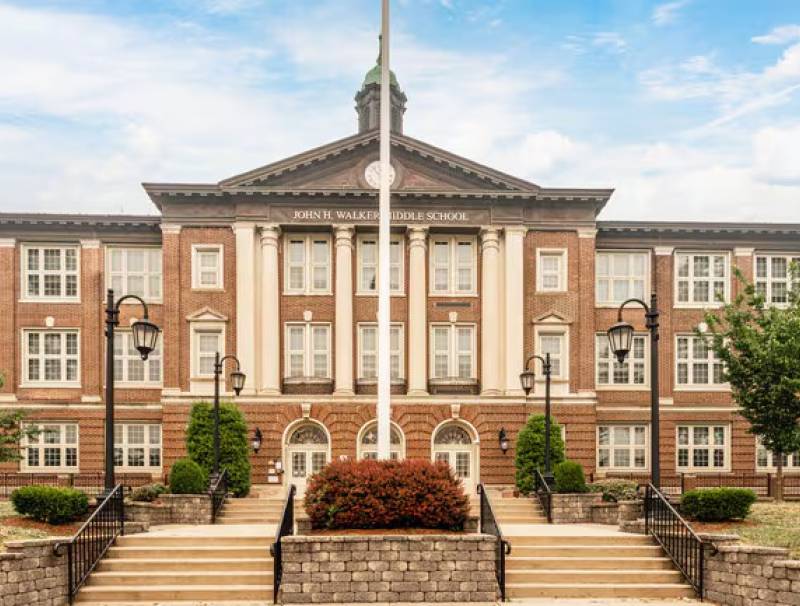Israel-Gaza Cease-Fire: What You Need to Know About the Conflict
Israel and Palestinian militant group Hamas, which rules the independent state of Gaza, agreed to a cease-fire that began on May 21, following pressure from the U.S. and its allies to end 11 days of fighting.
The barrages from both sides were the worst since the most recent of three wars between Israel and Hamas in 2014. The fighting, which began on May 10, claimed the lives of more than 250 people, mostly in Gaza.
The U.S., along with Egypt, Qatar and several European nations, worked to persuade both Israel and Hamas leaders to end their military campaigns.
Now the international community, including the Biden administration, is focused on making sure the cease-fire holds while also studying ways to begin rebuilding Gaza’s devastated infrastructure.
What does the cease-fire between Israel and Hamas entail?
In a sign of the challenges ahead for the cease-fire, Israel and Hamas gave differing versions of the terms.
According to coverage from a May 22 article by the Washington Post, Israel said the agreement involved no preconditions except that both would stop shooting at the same time.
Hamas said Israel agreed to stop what the militant group called Israel’s aggressive actions at the Al Aqsa Mosque compound in Jerusalem and the Sheikh Jarrah neighborhood, where Palestinians have demonstrated over the possible eviction of residents.
The same Washington Post article cites that, Israeli officials accused Hamas of fabricating the existence of these preconditions.
When did the cease-fire start?
The cease-fire began at 2 a.m. local time on May 21. Cease-fires during previous wars in Gaza have proved fragile. Truces lasting just a matter of days were broken in the last round of significant fighting in 2014, as each side blamed the other for renewed rocket attacks and airstrikes.
Why did Israel and Hamas fight?
Hamas began firing rockets toward Israel after the militant group issued an ultimatum to Israeli police forces to leave the Al Aqsa mosque complex and other areas in the contested city or else face attacks.
Some of the first rockets were aimed at Jerusalem, which Mr. Netanyahu said was a red line.
Hamas and Palestinian Islamic Jihad, another militant group in Gaza, launched over 4,000 rockets toward Israel, which has responded with aerial and artillery attacks. Israeli officials say it has killed “at least 200 operatives of Hamas and Palestinian Islamic Jihad. The operation has exacted a heavy civilian toll.”
Hamas says it began the latest conflict to force Israel to shift its policies in Jerusalem.
Israel said its goal was to fight Hamas—which Israel, the U.S. and other Western countries consider a terrorist group—to degrade its military capabilities and make clear that it won’t accept attacks on its citizens and cities.
What is happening in Israel?
While the Israeli military was fighting Hamas in Gaza, Israelis turned on each other, in the worst bout of Jew-versus-Arab communal violence in years. At least two were killed during the internal violence and several were severely beaten. The internal violence has largely subsided, partly due to a large-scale crackdown against suspects involved earlier in the year. More than 1,500 people were arrested in a joint operation between Israeli police and Israel’s Internal Security Services, which usually deals with terrorism.
While the cease-fire has ended hostilities between Israel and Gaza, tensions are still high in Jerusalem, where the unrest began.
On May 24, two Israelis, including a soldier in uniform, were injured in a stabbing attack by an assailant in Jerusalem. Palestinian media identified the attacker as a 17-year-old from East Jerusalem. A spokesman for the Israeli police didn’t respond to a request for comment on the identity of the assailant.
On May 21, Palestinians and Israeli police clashed at the Al Aqsa Mosque compound, where many Palestinians were celebrating what they saw as Hamas’s victory over Israel in the latest escalation.
The compound where the mosque is located—known as the Noble Sanctuary to Muslims and the Temple Mount to Jews—has become a focal point of Palestinian anger over what they see as years of efforts to push them out of Jerusalem and limit their access to land they claim, as well as infringing on their basic rights.
Right-wing Israeli efforts to assert control in East Jerusalem, which Israel claims as part of its undivided capital, have inflamed the situation. On May 10, tensions were especially high as young right-wing Israelis participated in marches associated with Jerusalem Day, meant to commemorate Israel’s capture of East Jerusalem in 1967.
Reporting on the events occurring by CNN’s Amir Tal cites that, “tensions in Jerusalem are also still high over a looming Israeli Supreme Court decision on whether to uphold the eviction of Palestinian families from their homes in the strategically situated Sheikh Jarrah neighborhood.”
Protests in Jerusalem have increased in hostility in recent weeks and have led to numerous clashes with Israeli police.
Where is Gaza?
Gaza, also called the Gaza Strip, is a 25-mile-long strip of land between Israel and Egypt along the eastern coast of the Mediterranean. Both Gaza and the West Bank, a separate block of land between Jordan and Israel’s internationally recognized borders, are under the jurisdiction of the Palestinian Authority. However, since 2007, Gaza has effectively been governed by Hamas, an Islamist organization. The territory is densely populated, home to around two million people.
I
sraeli forces left Gaza in 2005, though they continue to control the airspace and territorial waters. Israel and Hamas have fought three wars since the militant group seized control. Several escalations since the spring of 2018 have almost developed into full-blown conflicts.
What is the broader history of the Israeli-Palestinian conflict?
Based on recounts of Israeli-Palestinian history in an article by USA Today, the first major conflict between Israel and the Palestinians came in 1948, when “the neighboring Arab countries initiated a war with Israel immediately after it declared independence.”
Hundreds of thousands of Palestinians became refugees as a result of the war and their descendants now number in the millions, many of whom still live in refugee camps.
Israel and the neighboring Arab states went to war again in June 1967. Israel won the war in six days, and part of the land it conquered included large populations of Palestinians living in the Gaza Strip, the West Bank and East Jerusalem.
“Between the late 1980s and early 1990s and again from mid-2000 to 2005, Israelis and Palestinians clashed in what are called the first and second intifadas,” according to the same article.
In the middle of these violent periods, Israeli and Palestinian leadership embarked on a peace process known as the Oslo Accords. These agreements still form the basis of relations between the two sides, but the overall goal of reaching a two-state solution, with a Palestinian state formed alongside Israel, has proved elusive.
What does this mean for the Middle East?
The tensions surrounding Jerusalem and the wider conflagration with Gaza will test Israel’s relations with a group of Arab nations, including the United Arab Emirates, Bahrain and Morocco, as well as neighboring nations, Egypt and Jordan. Jerusalem and the status of the Palestinians are emotional issues for the Muslim world.
Statements made by several leaders of countries, such as the U.A.E., Saudi Arabia, Bahrain, have condemned Israel’s actions in Jerusalem








